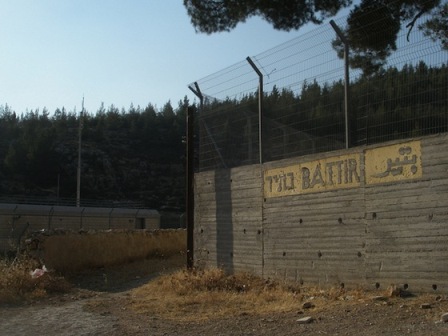Battle for Battir: Palestine’s New UNESCO World Heritage Site

Palestine has a new World Heritage Site: the ancient West Bank village of Battir [بتير], famous for its extensive dry-stone terracing and ancient irrigation systems that date to pre-Roman times. The hand-built terraces form an “organically evolved landscape” that have managed to preserve the shallow soil on the steep, stony slopes for thousands of years. The breath-taking landscape forms a tableau of olive groves and vineyards that offers a glimpse into the kind of traditional life and livelihood that have become increasingly rare in a region of beleaguered rural heritage.
Since 2005, the Palestinian Authority, in cooperation with UNESCO and other international partners, has taken steps to inscribe the cultural landscape of Battir on the World Heritage List. However, in 2013, the Palestine delegation notoriously withdrew the application for Battir, in order to appease the U.S. Secretary of State. Of fundamental concern is the preservation of the livelihood and cultural rights of the people of Battir, which would be violated should the Israeli government succeed in constructing its proposed barrier extension across Battir’s lands.
HIC-HLRN’s coordinatorrecently joined a petitionon behalf of Battirby the University of Virginia, School of Law, International Human Rights Program, the Boston University, School of Law Human Rights Clinic, and over fifty prominent scholars and experts to the 38th session of UNESCO’s World Heritage Committee. The Committee met in Doha between 15 and 25 June 2014 to consider the emergency nomination and, on 21 June, voted to designate Battir as Palestine’s newest World Heritage Site. This decision comes against the backdrop of a legal battle in theIsraeli High Court of Justicebetween Friends of the Earth-Middle East and the Israeli army over theproposed extension of Israel’s separationwall through the centuries-old village lands. It is hoped that the Committee’s favorable decision wouldplay a pivotal role in ensuring international cooperation in preserving the cultural integrity of Battirfrom the irreversible destruction posed by the wall’s extension.
Battiris situated just above the route of the Jaffa–Jerusalem railway, which served as the armistice line between Israel and Jordan from 1949 until the Six-Day War, when Israel captured the territory by force. Historically, the city lay along the route from Jerusalem to Bayt Jubrīn, [بيت جبرين]a Palestinian village (which Israel depopulated, demolished and colonized in 1948) at the crossroads to the Naqab and Gaza.
In the early 2000s, the State of Israel started to build the illegal[Arabic] separation wall in the West Bank, which progressively has isolated the Palestinian people from their land and natural resources, generally, and particularly severing the area of Battir and neighboring villages from the city of Bethlehem. However, the people of Battir have long retained access to the portions of their village located in Israeli-captured territory, based on a 1949 agreementnegotiated with the Jewish colony and then newly self-proclaimed state in Palestine. The proposed expansion of the wall threatens to damage Battir irreversibly and disrupt the way of lifefor its indigenous inhabitants by fragmenting the village and permanently destroying the landscape. The inscription of Battir on the World Heritage List now requires Israel to abandon its plan to build the barrier in Battir, because of its obligations under international law to protect World Heritage sites, in addition to the duty to remove and make reparation for the wall and its consequences, as affirmed by the International Court of Justice opinion of 2004.
|